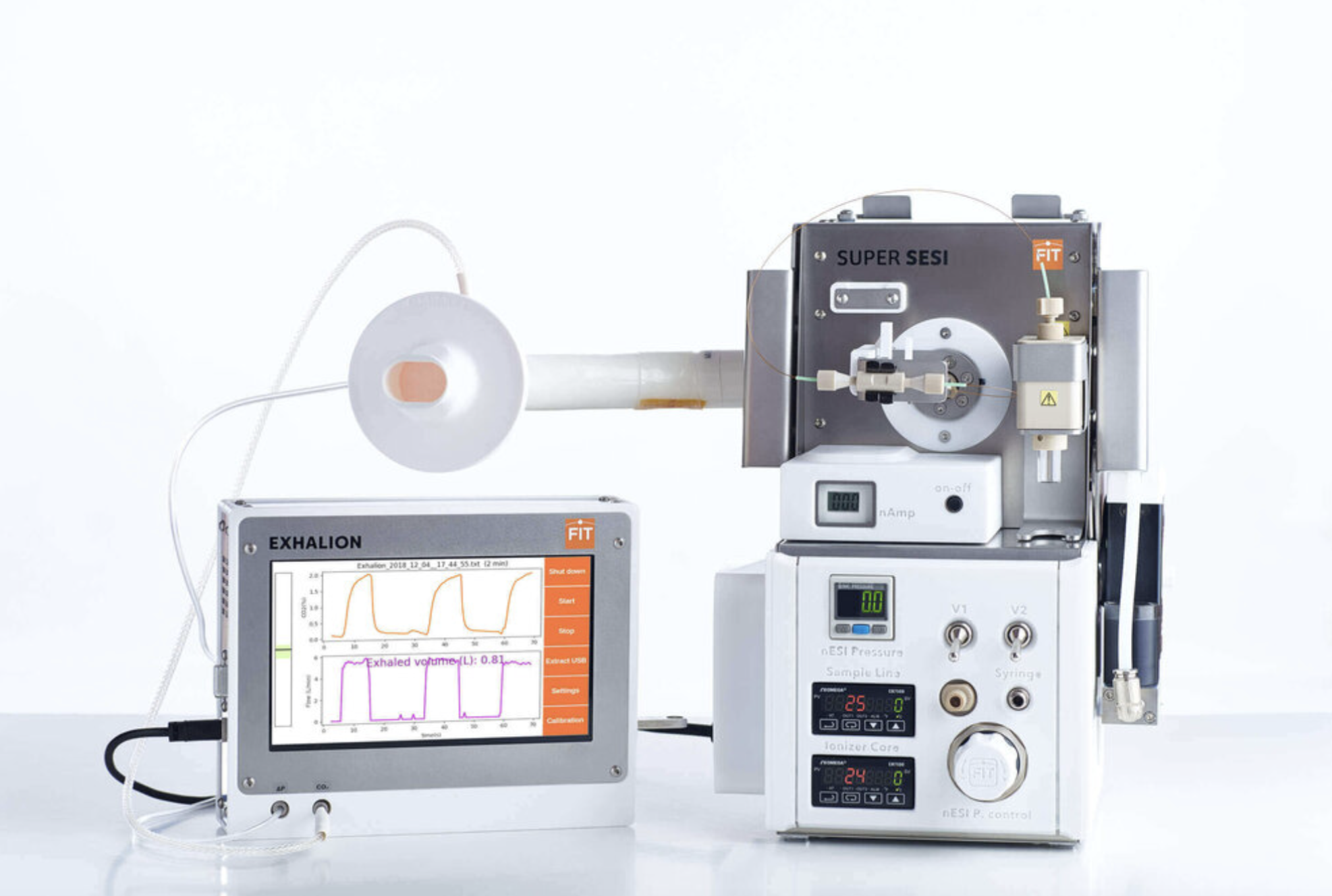Distinct volatile markers from Cystic Fibrosis pathogens with Secondary Electrospray Ionisation High-resolution Mass Spectrometry (SESI-HRMS)
Astghik Baghdasaryan, Tobias Bruderer, Simona Mueller, Ronja Weber, Naemi Haas-Baumann, Srdjan J. Micic, Christoph Berger, Renato Zenobi, Alexander Möller
Abstract
Microbial infection entails recruitment of inflammatory cells and release of proteases and contributes to morbidity in CF. The non-invasive early detection of airway colonization and infection would be a great step forward in the management of children with CF. The Zurich Exhalomics program aims to describe disease state specific breath-prints to assess airway inflammation and infection in children with CF.
We used headspace secondary electrospray Ionisation high-resolution mass spectrometry (SESI-HRMS) to analyze three biological replicates in randomized order for strain specific volatile metabolites of the following CF pathogens: S. aureus, S. maltophilia, H. influenzae, S. pneumoniae, E. coli, B. cepacia, P. aeruginosa and growth medium.
We found good repeatability between measurements and minimal variation between biological replicates. We performed ANOVA on 130 m/z features with intensities over 1000 cps. 61 showed significant difference in signal intensity between strains (under the FDR adjusted significance level of 5%). This resulted in unique sets of 4-12 volatile markers for P. aeruginosa, H. influenzae, S. pneumoniae, S. aureus and E. coli. Several markers for P. aeruginoas, B. cepacia and S. maltophilia were closely related. Compound identification has started by comparison of headspace fragment spectra for cultures with proposed reference compounds. So far, we could identify molecules from the following compound classes: heterocyclic organic compounds, aromatic aldehydes and aromatic heterocyclic organic compounds.
We report unique sets of volatile markers for CF relevant bacteria detected with SESI-HRMS.


